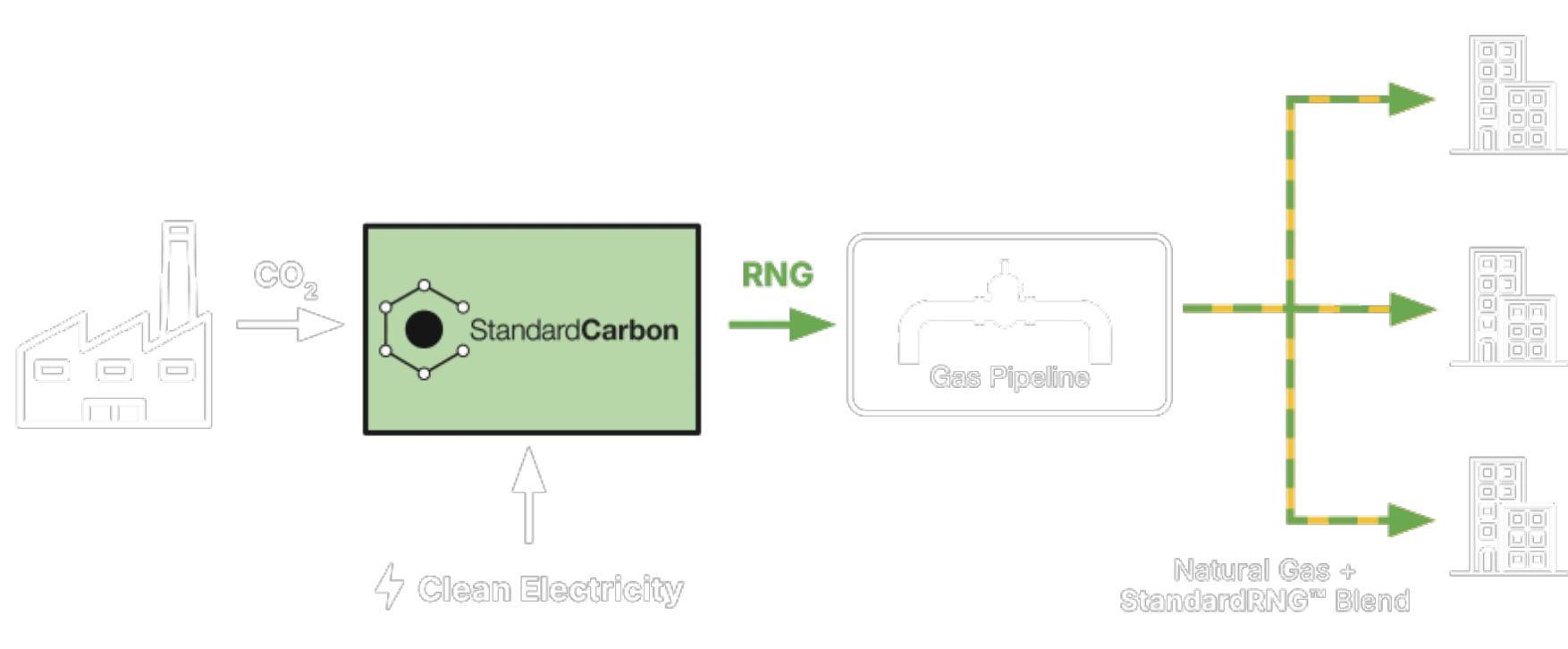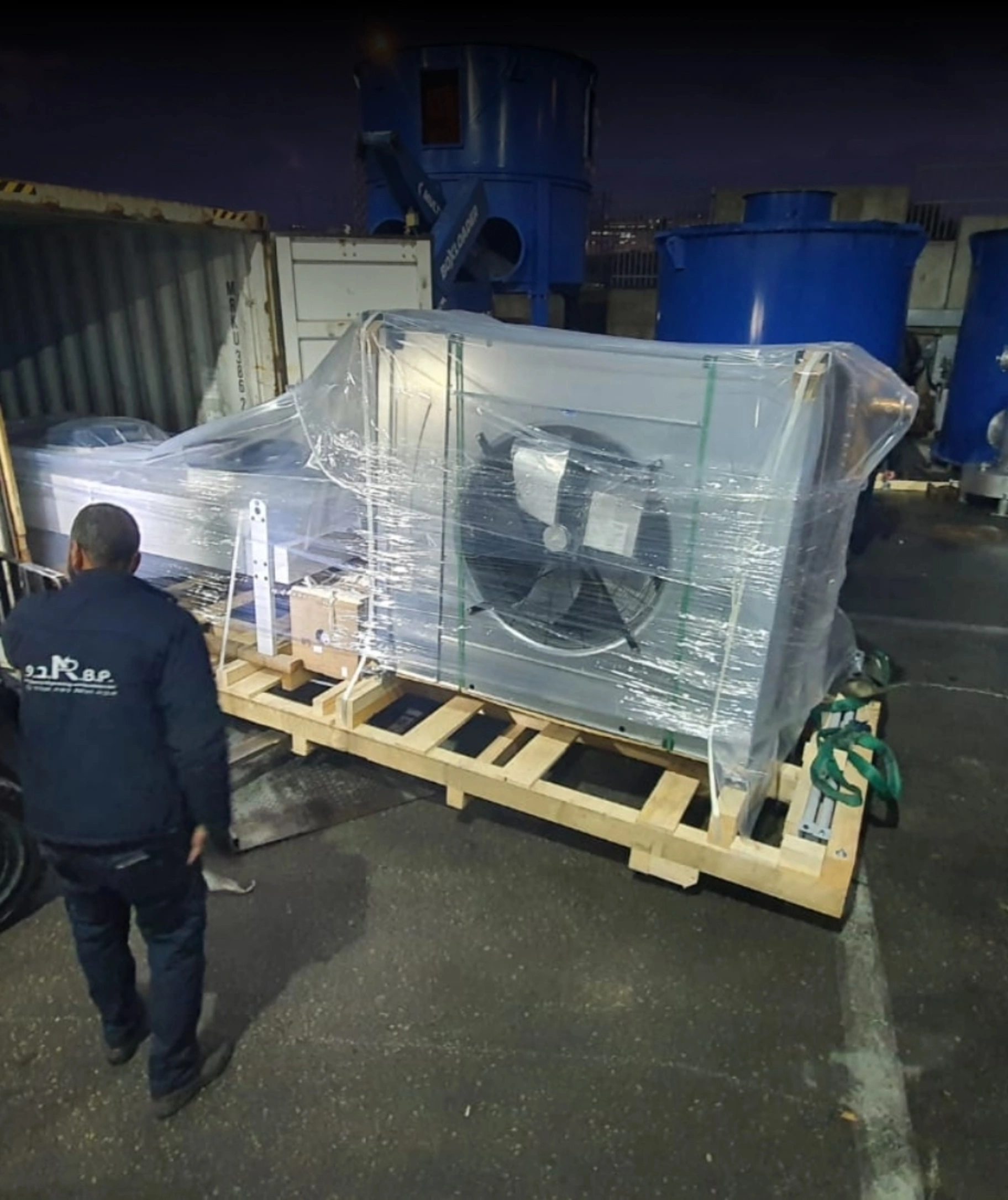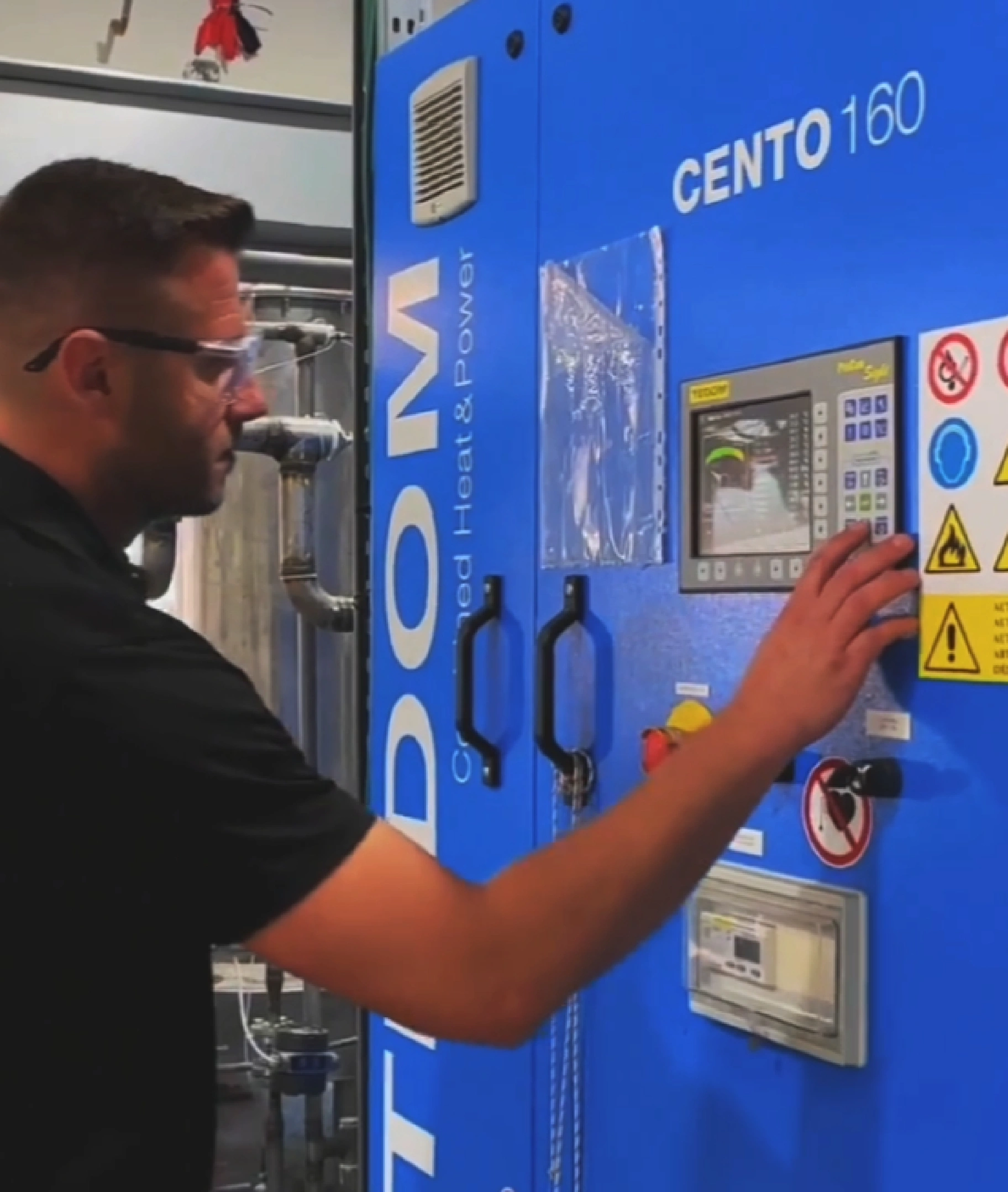FROM EMISSIONS TO ENERGY: HOW THE CARBON BRIDGE™ WORKS

Each stage of the Carbon Bridge™ process is engineered for reliability, performance, and low operational overhead:
1. Exhaust Gas Capture
CO2 rich exhaust is captured from combustion systems and directed into the Carbon Bridge™ for clean energy conversion without requiring major changes to your equipment.
2. Gas Treatment
A spray tower removes NOx, SOx, particulates, and trace contaminants to ensure clean gas flow for downstream conversion.
3. Carbon Capture & Desorption
Standard Carbon’s solvent-based carbon conversion reduces up to 99.9% of CO2 from combustion emissions. The process operates continuously, capturing CO2 in real-time and producing pure carbon feedstock for downstream conversion.
4. Electrolysis
Our proprietary alkaline electrolyzer powered by carbon-neutral or off-peak electricity splits water into hydrogen (H2) and oxygen (O2). Recycled water vapor from upstream and downstream stages supports resource efficiency. The resulting hydrogen is fed directly into the next phase to reduce energy loss and safety complexity.
5. Methanation
In our proprietary thermal catalytic reactor operating at ~200°C, CO2 from Phase I and H2 from Phase II are combined to synthesize e-RNG. The methanation and electrolysis phases operate in tandem, while excess CO2 is stored and reintroduced on demand. This process creates pipeline-grade RNG ready for storage, dispatch, or grid integration.
6. RNG Output (StandardRNGTM) & Energy Integration
StandardRNGTM is used on-site or sold. Waste heat from methanation is recovered to preheat inputs, enhancing total system efficiency.
In circular operation mode, the produced StandardRNGTM can fuel the same facility, creating a closed-loop energy cycle that reduces dependence on external fuel sources and supports long-term sustainability.

SCALABLE, RETROFIT-READY DECARBONIZATION
The Carbon BridgeTM s engineered with adaptability in mind. Its modular design scales from residential and commercial buildings to larger utility and industrial systems. Each unit arrives pre-assembled in a compact format, making deployment fast, efficient, and space-friendly, even in dense urban settings.
We support targeted decarbonization for:
- Residential and commercial buildings
- Gas-fired power plants and compression stations
- Cement, steel, and industrial process systems
It’s fully compatible with existing infrastructure, making it an ideal solution for organizations pursuing sustainability without disruption.
SMART DESIGN BACKED BY REAL-WORLD DATA
The Carbon Bridge™ is grounded in commercial-scale performance, with thousands of operational hours informing the intelligent control algorithms and real-time optimization software that drive its efficiency.
Key capabilities include:
- Intelligent AI enabled controls that adapt in real time to CO2 intensity, energy pricing, and grid conditions
- Optimization software that maximizes StandardRNG output and system performance based on real-world inputs
- Built-in safety features and operational safeguards to ensure reliability and continuous uptime
This intelligence ensures maximum StandardRNGTM output and system efficiency under real-world conditions.

